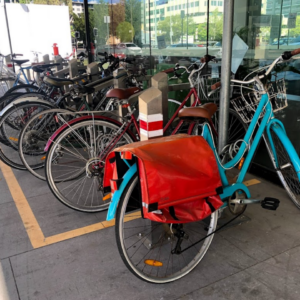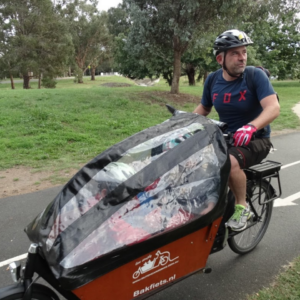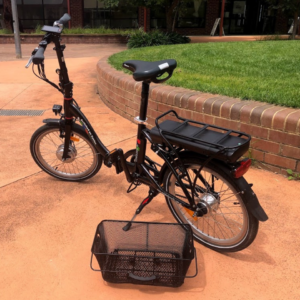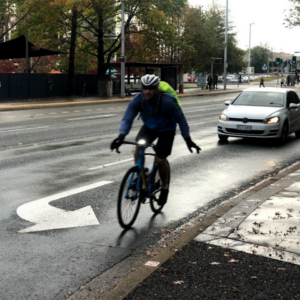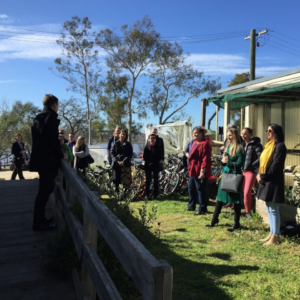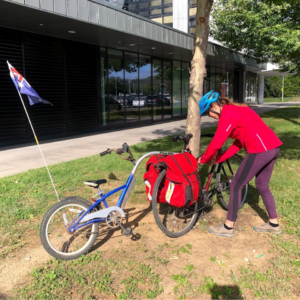
Set up for success
At home
Set up your gear near the door of your house so that it becomes your new default mode of transport.
Buy a MyWay card from a newsagent for each member of the family – $20 is a good amount for starters and the cards can be used immediately. Register the cards online and set up automatic balance top-ups. Use a permanent marker to write your name and phone number on the back of the card, then pop it into your wallet or phone case so that it is always with you. Have gloves, coat, hat, suncream and a raincoat or umbrella by the front door so you’re prepared whatever the weather.
Learn how to load your bike onto the bike rack on the front of a bus. The driver is not permitted to help you so for the first time, do it in the middle of the day when it’s quieter and you are not under pressure. Apply for access to Transport Canberra’s bike cages and park & ride car spaces if you intend to use them.
Keep your cycling gear near the door of the house so that it is quick and easy to throw on your (high-vis) jacket and helmet, pick up your bag and go. Make sure you refill water bottles, replenish repair or first aid kits if used, air jackets and dry anything wet when you get home so they are good to go again next morning.
Store your bike locked or secured out of sight (bikes do get stolen from homes) but keep the access to it clear and as near to your door as is practical so you can easily load it and wheel it out. Store an e-bike next to a powerpoint or run an extension cord (safely!) so that you can plug it in when you get home. If this isn’t possible, remove the battery and charge it near your door with your other cycling gear. If the bike got muddy, wash it off before putting it away. Do a quick check once a month to make sure tyres are pumped up, lights are working, chain is lubricated, brakes are effective, nothing is coming loose.
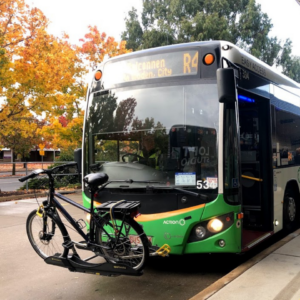
At destination
Scope the “end-of-trip” facilities at your destination so that you are confident and organised on arrival.
Locate showers and lockers so you can freshen up and store gear if needed. They might be on a different floor or even a neighbouring building.
Look out for public repair bike stations and local business ‘bike stops’ that have facilities for bike riders. See also “Workplace moves” for how your employer can support all employees.
Take spare shoes, clothes and a towel with you, or keep a change at work if you’re worried about being sweaty or getting drenched.
Find out what racks, rails or storage cages are available at or near your destination to secure your bike or scooter and charge it if electric. There might be space in a basement or an adjacent building, or perhaps your employer could allocate a storeroom or space in a garage or lobby.
There are public bike racks near the entrances of most major buildings, in town centres and at local shops and schools. There are bike rails at over 15 bus stop locations, primarily on Rapid routes, plus bike cages at selected bus stop areas.
A D-lock is the most secure method to lock the frame to a fixed pole or rack. A cable or chain or folding lock can be threaded through wheels and frame. The thicker or more solid the lock, the harder it is for a thief to quickly cut it off. Choose combination locks so you never lose keys.
If you have accessories attached to your bike, such as lights, water bottle or a pump, you may wish to consider removing these to take with you.
Let your supervisor know you are using public or active transport and what time you need to leave at the end of the day to catch your bus or allow time to cycle home safely.
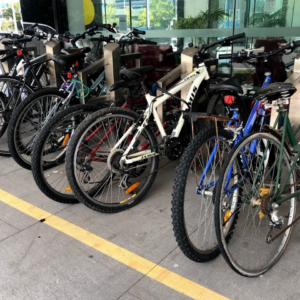
Make your next move ...
Download the free guide and action planner and make your first move into clean transport
